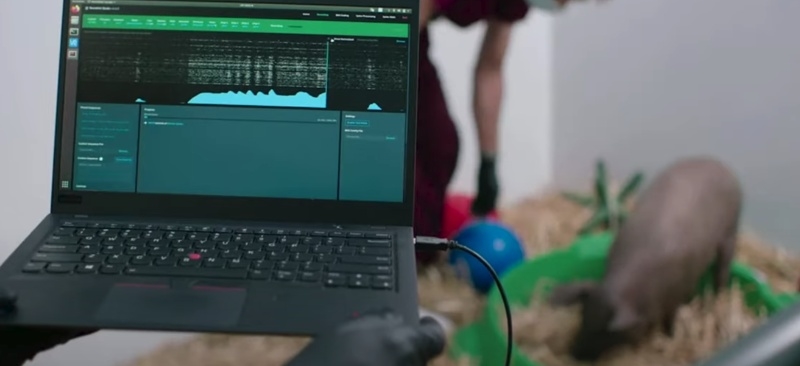Elon Musk’s brain-burrowing Neuralink venture has debuted the latest version of its mind-reading chip, showing it can work in live animals.
The company has simplified the device since its first unveiling last summer. It initially involved a small pod worn behind the outside of the ear, connected to separate electrodes strung up to the brain.
Now, the new version aims to fit entirely within the head, replacing a small cutout of the skull bone with a chip about the size of a coin. “In many ways it’s like a Fitbit in your skull, with tiny wires,” Musk said in the company’s live stream, as the device also aims to measure a person’s movement and body temperature, and connect wirelessly to a smartphone.
And these are very tiny wires—at about 5 microns wide, they’re slightly smaller than the diameter of your average red blood cell.
These filaments are stitched into the brain by Neuralink’s surgical robot, which somewhat resembles a large, sterile sewing machine. It can connect up to 1,024 wires at a time, while working to avoid puncturing veins and arteries, to provide a higher-resolution view into neural activity than current technologies that may offer a few dozen channels.
Musk said the whole procedure could take less than an hour, without general anesthesia. The objective is to build a robot that can perform the entire surgery itself, from the first cut to wiring to closing up.
The company’s goal is to ultimately solve brain and spine problems—such as rejoining a disconnected or damaged brain with the motor muscles of the arms and legs—but it also hopes to one day address a broader array of neurological conditions, such as depression, anxiety, seizures and memory loss, or even serve as a consumer product.
However the chip currently works in one direction, for the most part: it can observe and record neurons’ electrical activity, but the science behind transmitting intelligible signals back to the tissue to correct a disease—or even streaming music sans headphones, as Musk pitched—may be years away. In addition, mapping activity from different regions of the human brain to any specific behavior or motion is, at this point, less than clear.
The early stages of this research were demonstrated with a pig named Gertrude, who has lived with a Neuralink implant for two months. She was able to light up a computer screen each time her snout smelled or touched something interesting, causing neurons to fire. Meanwhile another pig, Dorothy, was implanted with the device but had it removed, to show its reversibility.
Neuralink also showed that, by putting a pig on a treadmill and tracing the movements of its joints, it could nearly predict the location of each limb as it walked, by just using data gathered from the brain.
Musk said the device received a breakthrough designation from the FDA in July, and is currently preparing for its first human implantations, pending regulatory approvals for a study and additional safety testing.
And to do so, Neuralink hopes to increase its staff. “The primary purpose of this demo is actually recruiting,” Musk said. “We’re not trying to raise money—the main purpose of this is to convince great people to come work at Neuralink, and help us bring this product to fruition.”
Earlier the same day, the FDA granted a separate breakthrough designation to Synchron for its brain-computer interface, which forgoes the messier business of trepanning. The company’s Stentrode is placed within the brain from inside the blood vessels, avoiding open surgery, with the goal of restoring movement after upper-limb paralysis with a connected prosthetic.

